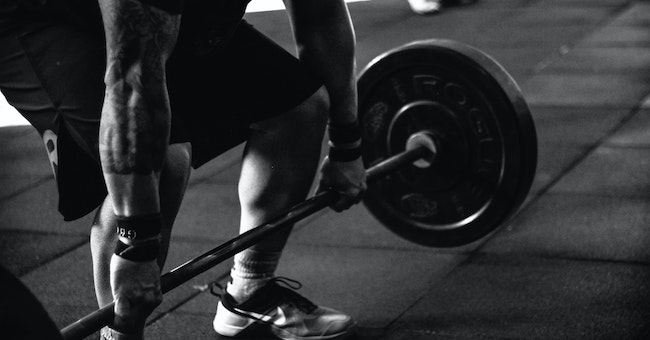Muscle Building: Science, Strategies, and Success

Introduction
Achieving the ideal physique through muscle building is a goal shared by many fitness enthusiasts. However, building muscle isn't just about lifting weights – it's a complex process that requires a combination of science, dedication, and effective strategies. In this blog, we will delve into the science behind muscle building, explore key strategies for maximizing muscle growth, and provide actionable tips for those looking to embark on their muscle-building journey.
The Science of Muscle Building
Muscle building, also known as hypertrophy, is a process where muscle fibers increase in size and strength due to progressive resistance training. This process involves the activation of muscle fibers, mechanical tension, metabolic stress, and muscle damage, which collectively stimulate muscle growth. Here's a breakdown of these components:
Muscle Fiber Activation: Resistance training activates motor units within muscle fibers, recruiting more muscle fibers to perform a specific movement. This activation is essential for initiating muscle growth.
Mechanical Tension: Lifting weights places stress on muscle fibers, causing them to adapt and grow stronger. Progressive overload, increasing weight or resistance over time, is crucial for continuous muscle growth.
Metabolic Stress: Engaging in high-repetition and short-rest workouts creates metabolic stress, leading to the accumulation of metabolites such as lactate. This stress contributes to muscle growth by triggering hormonal responses and promoting muscle damage repair.
Muscle Damage and Repair: Intense workouts cause micro-tears in muscle fibers. During the recovery phase, the body repairs and rebuilds muscle tissue, resulting in increased muscle size and strength.
Key Strategies for Effective Muscle Building
Progressive Overload: To trigger muscle growth, gradually increase the resistance or weight you lift. This challenges your muscles and encourages them to adapt and grow stronger.
Compound Exercises: Focus on compound exercises like squats, deadlifts, bench presses, and rows. These exercises engage multiple muscle groups, leading to more significant muscle stimulation.
Proper Nutrition: A balanced diet rich in protein, carbohydrates, and healthy fats is essential for muscle growth. Protein provides the building blocks (amino acids) needed for muscle repair and growth.
Rest and Recovery: Adequate sleep and rest are crucial for muscle recovery and growth. Muscles repair and grow during periods of rest, so ensure you have rest days in your routine.
Consistency: Consistency is key to muscle building. Stick to a well-structured workout plan and nutrition regimen to see steady progress over time.
Variation: Incorporate variety in your workouts to prevent plateaus and keep your muscles challenged. Change exercises, rep ranges, and training techniques periodically.
Hydration: Staying hydrated is important for optimal muscle function and recovery. Water helps transport nutrients to muscle cells and remove waste products.
Tips for a Successful Muscle-Building Journey
Set Realistic Goals: Set achievable short-term and long-term goals to track your progress and stay motivated.
Warm-Up: Always warm up before starting your workouts to increase blood flow and reduce the risk of injury.
Form Over Weight: Focus on proper form and technique to prevent injuries and ensure effective muscle activation.
Listen to Your Body: Pay attention to your body's signals. If you're fatigued or experiencing pain, take a break.
Stay Patient: Building muscle takes time. Be patient and consistent with your efforts, and results will come.
Stay Hydrated: Proper hydration supports overall health and enhances muscle function.
Include Rest Days: Allow your muscles to recover and grow by incorporating rest days into your routine.
Recommended Online Resources for Muscle Building
30 Min FULL BODY DUMBBELL WORKOUT at Home Muscle Building
Caroline Girvan's 30 Min FULL BODY DUMBBELL WORKOUT at Home Muscle Building is a comprehensive strength training program designed to target every muscle group with compound movements. The workout consists of 3 sets of exercises performed for 30 seconds each, with 30 seconds of rest in between. Using 15kg x 2 dumbbells (adjustable for lighter weights), exercises include High Squats, Sumo Deadlifts, Squat Static Lunges, Romanian Deadlifts, Shoulder Press, Bent Over Rows, Chest Press, and Pullovers. Suitable for all levels, this workout promotes muscle building and can be adapted for progression over time.
Course highlights:
Comprehensive Muscle Targeting: Targets every muscle group using compound movements.
Efficient Workout Structure: 30 seconds exercise, 30 seconds rest, 3 sets.
Dumbbell Versatility: Utilizes 15kg x 2 dumbbells or adjustable lighter weights.
Variety of Exercises: High Squats, Sumo Deadlift, Squat Static Lunge, and more.
Suitable for All Levels: Progression options with increased reps and weights.
Building Muscle Without Weights (Muscle Building At Home!)
Discover Ivana Chapman's Building Muscle Without Weights course, your guide to transforming your physique at home. Shed pounds and sculpt muscle without traditional weights. Learn progressive resistance techniques, mastering compound and bodyweight exercises. Progress your bodyweight routine and achieve consistent muscle growth without gym equipment. Optimize muscle hypertrophy with expert insights. Plus, enjoy a complimentary ebook and access additional resources for expanding your fitness knowledge.
Course highlights:
Weight-Free Fitness: Build muscle with bodyweight exercises.
Progressive Resistance: Learn to increase muscle strength without weights.
No Gym Needed: Exercise at home without special equipment.
Effective Muscle Growth: Discover strategies to maximize muscle hypertrophy.
Comprehensive Resources: Includes a free ebook and additional references.
Muscle Building: The Ultimate Guide to Building Muscles
"Muscle Building: The Ultimate Guide" is a comprehensive course focused on helping you achieve muscle growth. Learn targeted exercises to develop core, arms, neck, and legs. Gain the tools to design your own flexible workout routines, eliminating the need for a personal trainer. Overcome workout obstacles and avoid overexertion. Understand the art of muscle building, combining consistent effort and a balanced diet. Develop upper body strength through specific exercises and programs. Explore strategies to effectively build leg muscles, pushing your training to new heights. Regardless of genetics, this course empowers you to achieve your goals and enhance strength, stamina, and self-confidence.
Course highlights:
Comprehensive Muscle Building: Learn effective exercises targeting core, arms, neck, and legs.
Customized Workouts: Create flexible routines using newly acquired exercises.
Expert Guidance: Achieve muscle growth without a personal trainer through proven advice.
Strengthen Mindset: Overcome excuses, avoid pushing too hard, and maintain consistency.
Upper Body Focus: Develop impressive upper body strength through tailored exercises.
Leg Muscle Mastery: Transform leg muscles with proper training techniques and protein intake.
FAQs
Q: Do I need to lift heavy weights to build muscle?A: Lifting weights that challenge your muscles is important, but the right weight depends on your fitness level. Progressive overload, gradually increasing resistance, is key for muscle growth.
Q: Is protein important for muscle building?A: Yes, protein is crucial for muscle repair and growth. Consuming an adequate amount of protein, along with a balanced diet, supports muscle development.
Q: How often should I work out to build muscle?A: For optimal results, aim for strength training sessions 2-3 times per week, targeting different muscle groups. Allow adequate rest between sessions for recovery.
Q: What are compound exercises?A: Compound exercises engage multiple muscle groups simultaneously. Examples include squats, deadlifts, bench presses, and pull-ups. These exercises are efficient for muscle building.
Q: Can I build muscle without going to the gym?A: Yes, you can build muscle at home using bodyweight exercises, resistance bands, or minimal equipment. The key is progressive resistance and proper form.
Q: Can I build muscle while losing fat?A: Yes, it's possible to build muscle while losing fat, especially for beginners or those returning to exercise. Combining strength training with a balanced diet supports this goal.
Conclusion
Muscle building is a multifaceted journey that requires an understanding of the science behind it, effective strategies, and a commitment to consistent effort. By incorporating progressive overload, compound exercises, proper nutrition, rest, and various other key factors, individuals can achieve their muscle-building goals and attain a strong and healthy physique. Remember, success in muscle building is not solely about the end result, but also about the journey of self-improvement and dedication to a healthier lifestyle.





